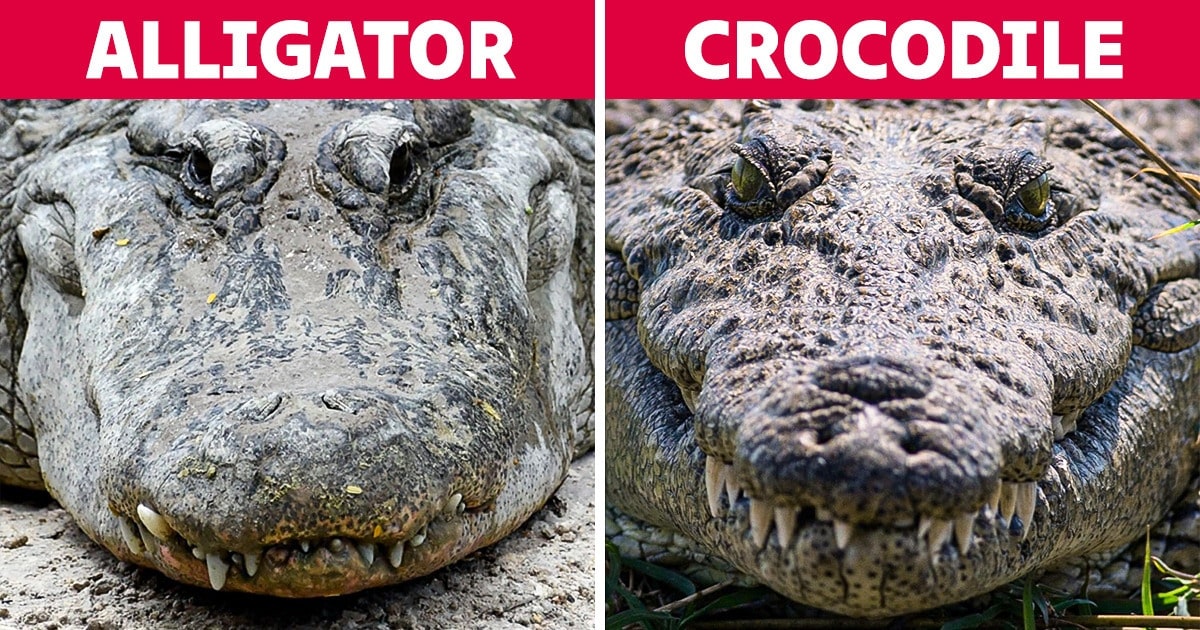Even devoted Animal Planet watchers have been known to mistake some animals for one another because they have such striking visual similarities. a llama and an alpaca, or a jaguar and a leopard. Right now, let’s get this straight: the first pair of animals differ in body shape, type of skin patches, and tail length. In terms of the llama, it differs from the alpaca in terms of fur, ear and muzzle shape, and body size.
Here at Hiptoro, we’ve learned what other creatures people frequently confuse with one another and how to tell them apart.
Hawk and Falcon.
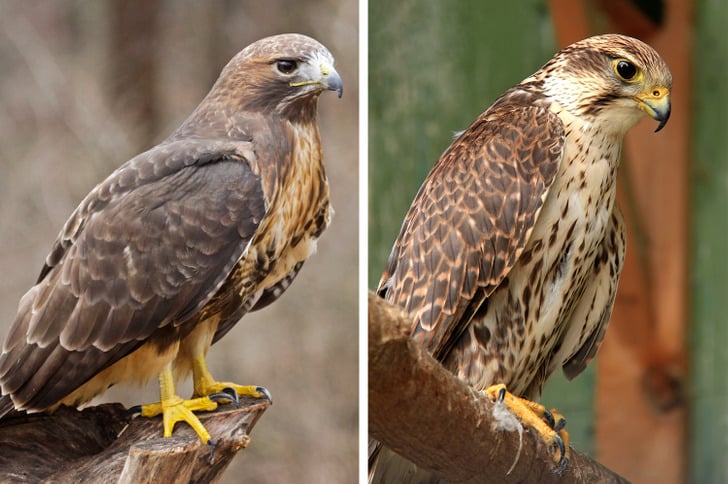
The size disparity between these two raptors is the most notable. Hawks are larger than falcons. The distinctive features of their wings and the manner in which they hunt are two more, equally noticeable contrasts between them. The wings of a hawk are short, broad, and rounded, but the wings of a falcon are long, narrow, and pointed. While falcons use a ‘tooth,’ hawks use claws to capture their prey (a special notch on the side of their beak).
Nutria and Muskrat.
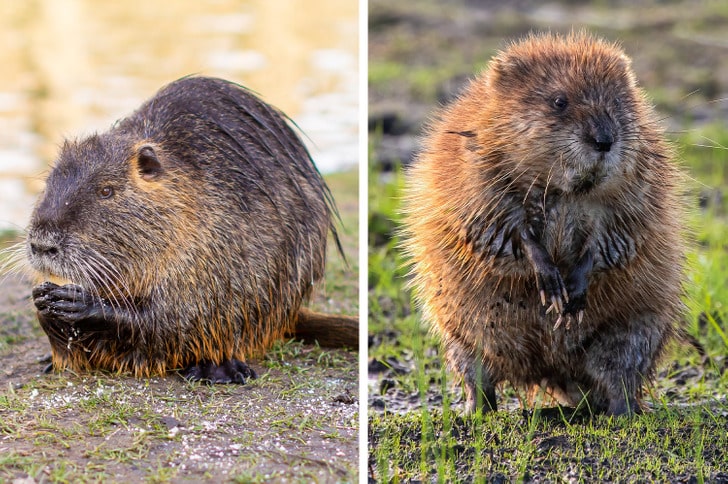
These rats have a distinction while having a similar appearance. First off, muskrats (1.3–4.4 lbs) weigh less than nutrias (9–20 lbs). Second, their tails are distinctly dissimilar. The nutria’s tail is thick, rounded, and coated in hard fur, while a muskrat’s is thin, scaly, and flattened on the sides. In addition, the nutria has three other distinctive characteristics, including a white mark on its muzzle, webbed hind legs, and big, brilliant orange teeth.
Salamander and Lizard.
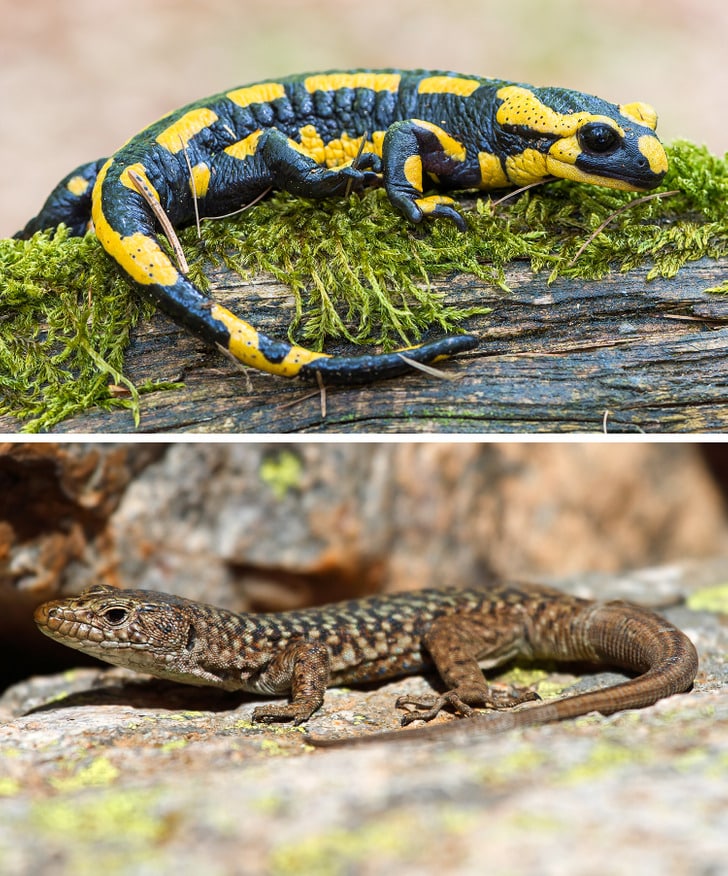
The fundamental distinction between salamanders and lizards is that all salamander species are amphibians, whereas all lizard species are reptiles. Some species of salamander and lizard are actually quite similar to one another. Salamanders also lack claws and ear openings, and their skin feels smooth and damp to the touch compared to lizards’ hard scales.
Frog and Toad.
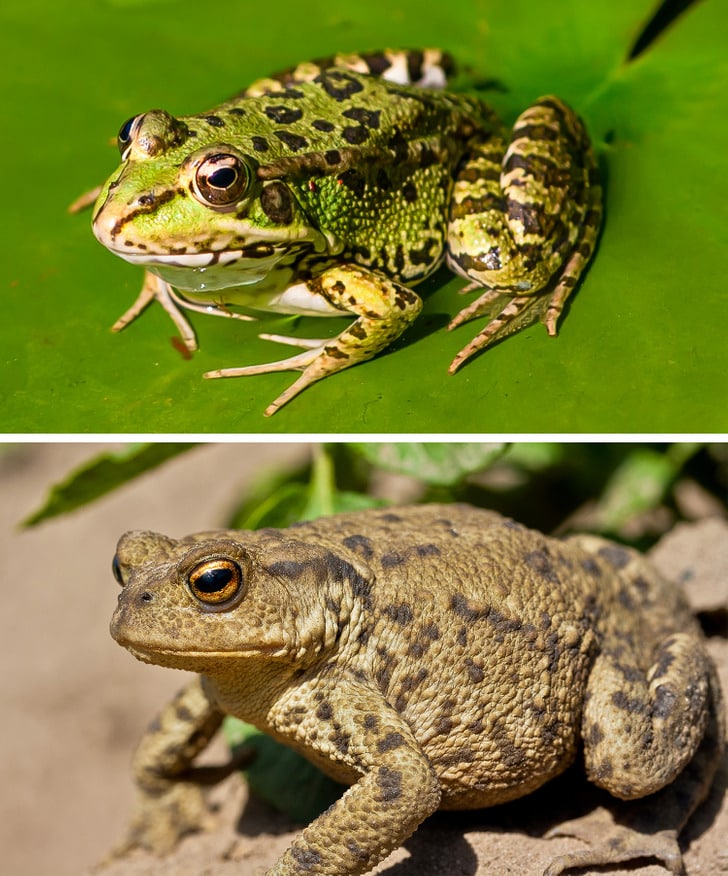
Even while frogs and toads are both amphibians and share many other characteristics, they differ in a few key areas. In general, frogs have lengthy legs. Additionally, their skin is typically damp because they spend most of their lives in or near water. The skin of toads, on the other hand, is rough and dry since they dwell on dry terrain and have short legs.
Opossum and Possum.
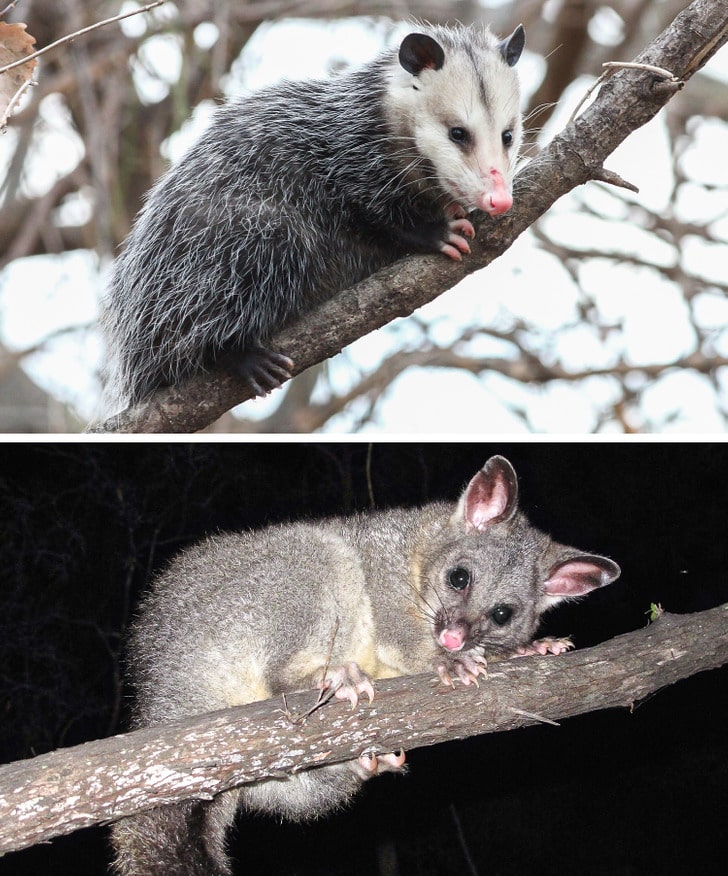
Although opossums and possums are both marsupials and share a name, that is about all they have in common. Native to North America, opossums, for instance, are distinguished by their greyish-brown fur, white snout, and nearly bare, a rat-like tail that they can utilise to cling to branches. Contrarily, possums, which are native to Australia, are typically silvery grey, brown, black, or cream in colour with a dark snout and a fluffy tail.
Money and Ape.
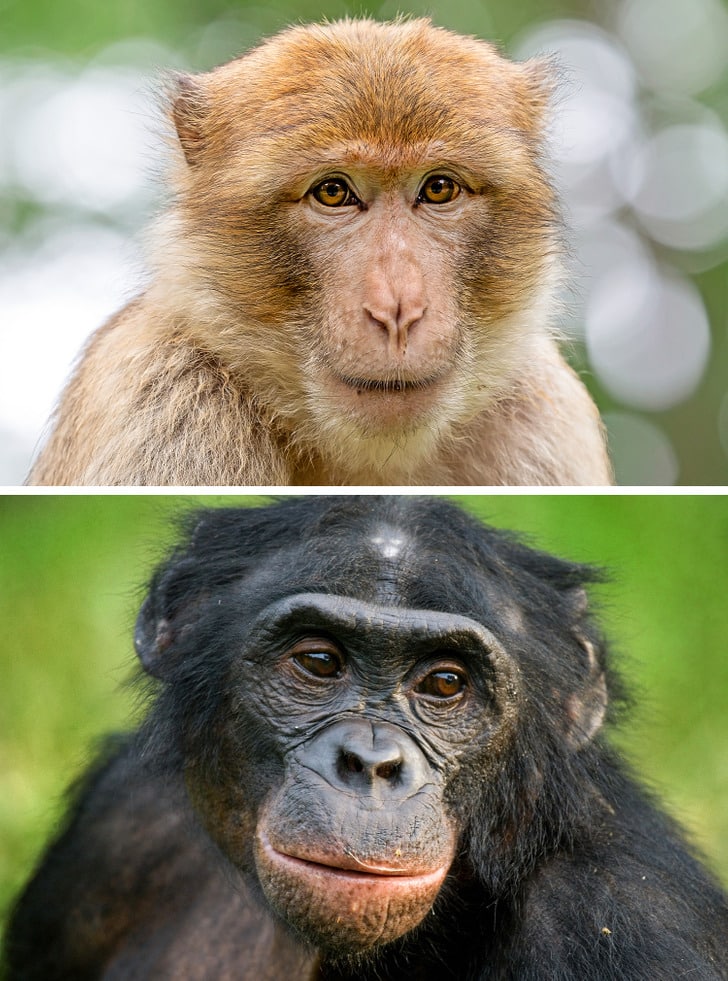
All monkeys and apes are primates, however, they differ greatly from one another. The tail is the most straightforward way to distinguish between them. Apes lack one while the majority of monkeys do. Their physical attributes are another clear distinction. With a broad chest, broad shoulders, and lengthy arms, apes are substantially larger than monkeys.
Fox and Black-Backed Jackal.
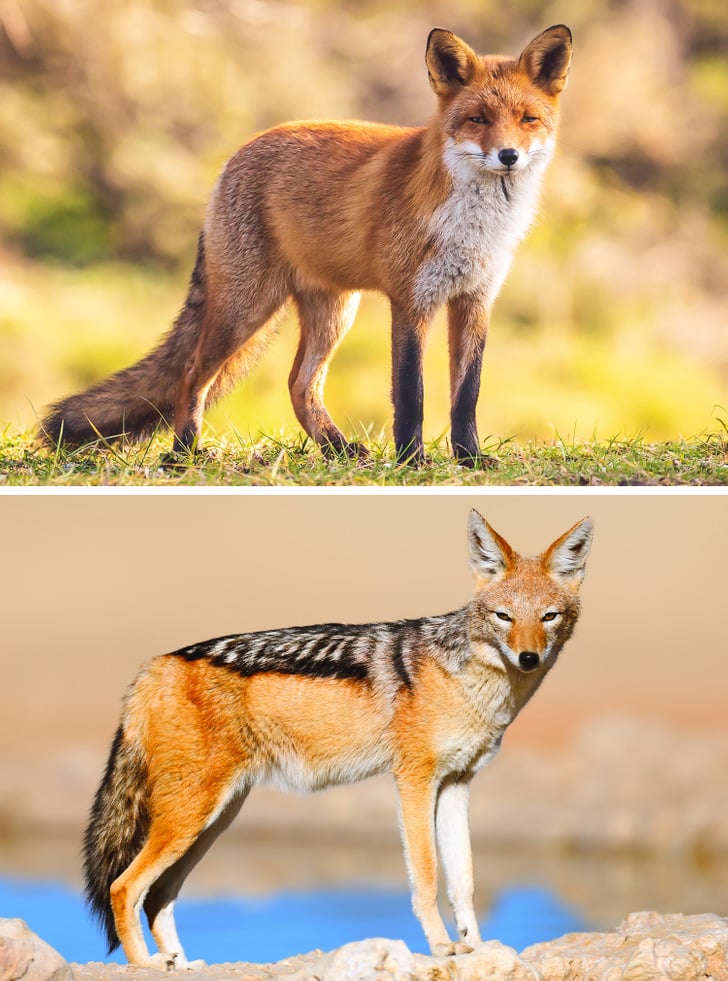
The fox and the black-backed jackal may initially seem to be pretty similar, yet they do have some noticeable distinctions. For instance, the fox has long, fluffy tails, long, triangular ears, and a nose that is sharp and slightly raised. On the other side, the black-backed jackal has a longer body, long legs, and huge ears. The distinctive black saddle that runs over the back of the jackal’s coat is the primary distinction, though.
Grasshopper and Locust.
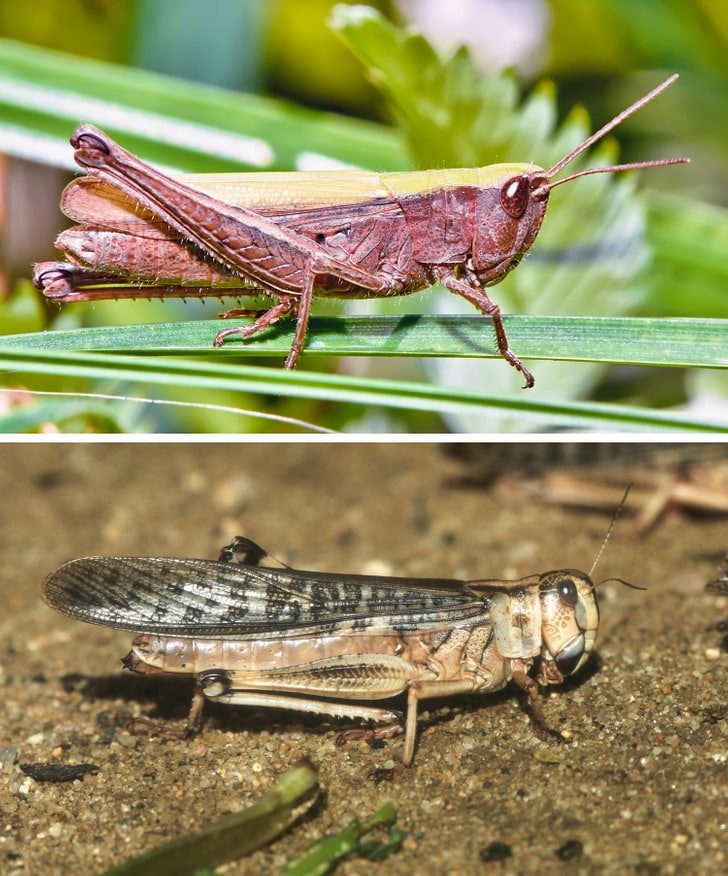
These insects are actually distinct despite their apparent similarity. However intriguing, we must point out that locusts are not distinct species. It’s actually a species of grasshopper that becomes gregarious and alters its colour, behaviour, and reproductive behaviours in response to particular conditions (like dense vegetation growth following a drought, for example).
Grasshoppers can perform their distinctive high jump because of their long, strong hind legs. In contrast, locusts have shorter legs but longer, stronger wings that enable them to fly great distances.
Pangolin and Armadillo.
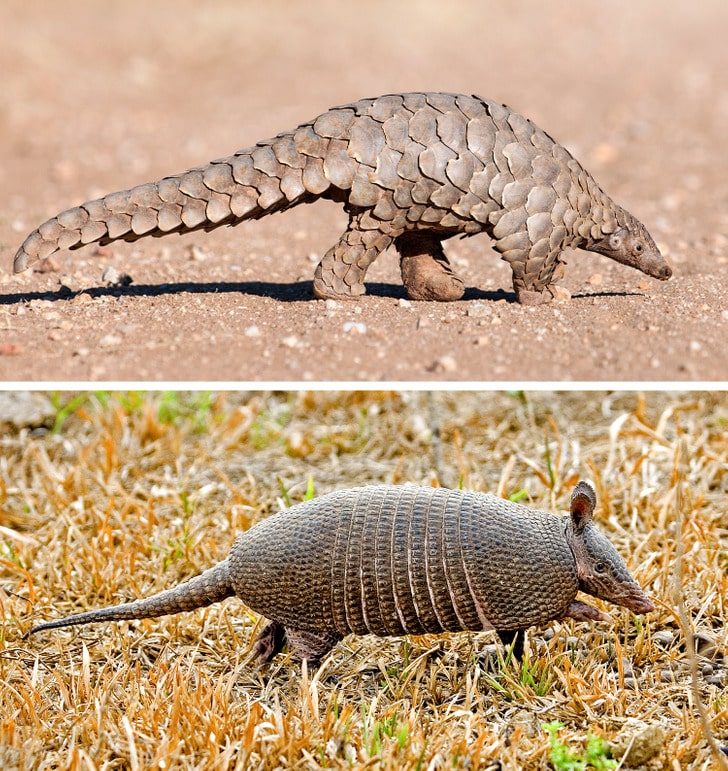
Because they both have protective armour on their bodies, these animals are sometimes confused with one another. On closer inspection, however, it becomes clear that a pangolin’s armour resembles thick scales, but an armadillo contains more of what appears to be leather plates. In addition, pangolins’ ears are very small and spherical, and some even have no ears at all, only ear holes, in contrast to armadillos’ distinctly visible pointy ears.
Alligator and Crocodile.
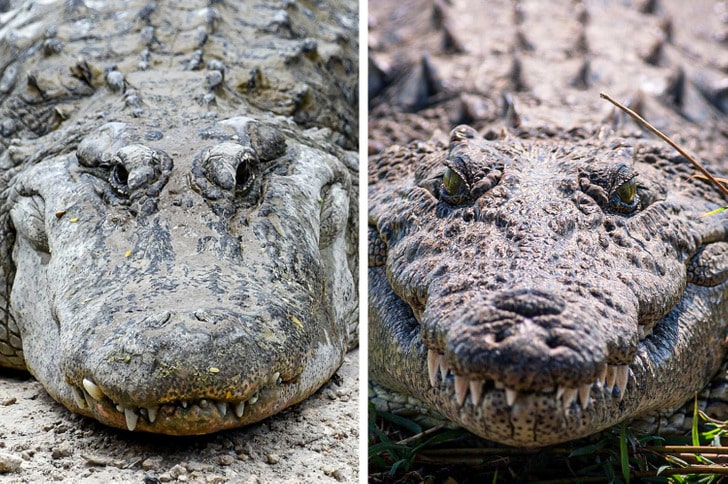
Alligators and crocodiles have evolved over millions of years, but they have mostly stayed the same. However, there are noticeable distinctions between them. Their snout is the most noticeable indicator. Crocodiles have a narrower, V-shaped snout, whereas alligators have a broad, U-shaped one.
Their teeth are another equally evident distinction. Alligators’ lower teeth fit into the grooves of the upper jaw, so when their jaws are closed, only the upper teeth are visible. Crocodiles, on the other hand, have a “toothy” smile because both their top and lower teeth are visible.
Do you still confuse some animals with one another?


